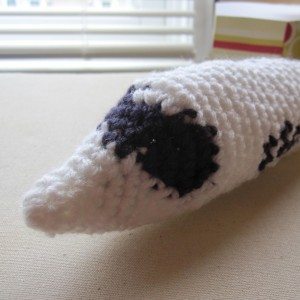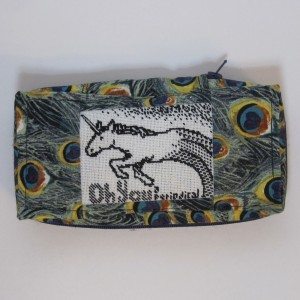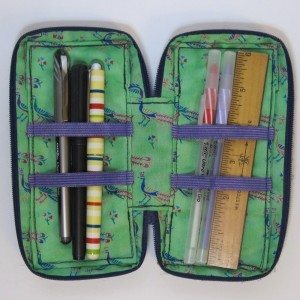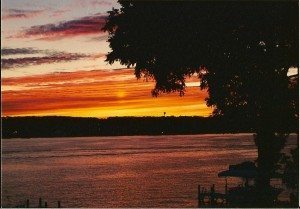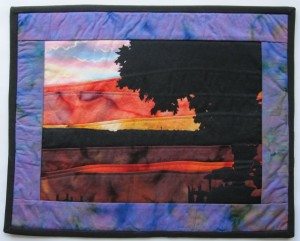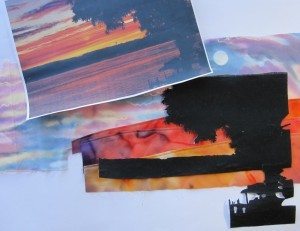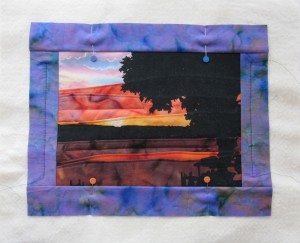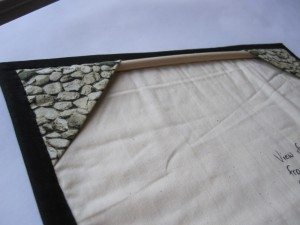Ready for takeoff!
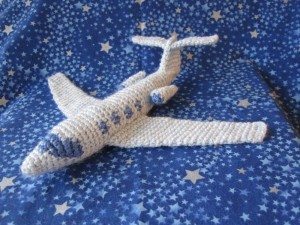
A friend had told me about the paucity of airplanes for babies, which she discovered when her daughter and jet pilot son-in-law had their first child (I’m told Disney is planning a Cars-like movie about planes, so that’s likely to change soon), and I thought that was the perfect push for me to design one.
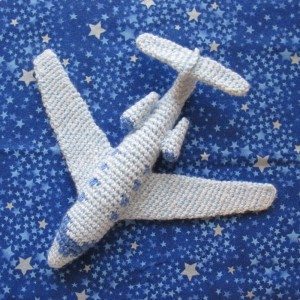
The pattern is not ready for prime time just yet, but I am very pleased with how this came out. The wings and tailfins are, of course, kind of floppy, but I think that just gives the plane personality.
I washed it the night before giving it to her and it was, unfortunately, not dry by morning (despite over a half hour in the dryer before sitting out overnight). However, that was not the worst thing, because I was able to blow-dry out the marks left by my overnight shaping method:
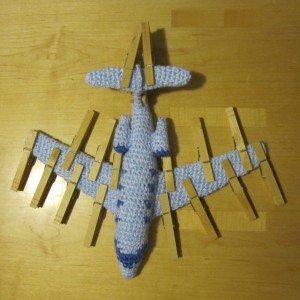
That photo just amuses me. The plane is about 10 inches long in sport weight yarn (100% acrylic, with 95% polyester/5% silk fiberfill), made with an E hook (3.5mm), and while the engines and base of the tailfins are sewn to the jet body, the wings are crocheted directly onto the body, the base of the tailfins is crocheted directly onto the fins, and the fins are then crocheted together across the top.
Incidentally, I’m pretty sure one of my design drafts looks like a comic book character – a specific one – but I can’t for the life of me figure out which. Any identification out there? The darker color is purple.
